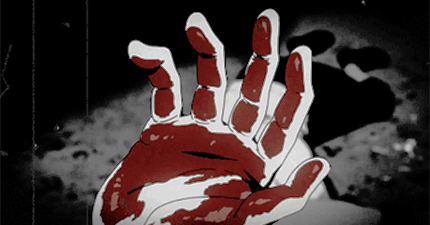Eugenics has a very precise reputation. This reputation hides and camouflages the variety and immensity of its practice. When we think of eugenics, we often think of what we are taught as eugenics. We think of World War II, Nazis, and something way back then.
That’s eugenics but that’s not the entirety of eugenics.
There were two ideological camps within early eugenics. One camp thought that the white race could only be preserved and improved upon through strict social control and the genocide or marginalization of degenerate people (degenerates includes the ill, the mad, the homosexual, and the non-white). The other camp didn’t actually believe this. The other camp of eugenics believed that natural selection could only be improved upon through genetic, racial, and cultural diversity.
Yes, multiculturalism is a framework that can easily be included into eugenics. These things are not so incompatible or even separate.
You see, eugenics isn’t always about preserving monoliths. Eugenics can often be about diversity as long as diversity’s goal is progressive or improvement oriented. Eugenics isn't always even white though whiteness is usually mixed in. Sometimes, especially in the developing world, eugenics is about multicultural ideals.
Eugenics is the practice of trying to improve a race of people. To practice eugenics, you must believe in race not just to study it, racial ideology’s affects on life, and to deconstruct its tired teachings but to believe in race as a matter of principle.
In many ways, abortion has lived a dual life. In many circumstances it lives as the freedom to eliminate an unwanted pregnancy. In many other circumstances, it has functioned as a tool for eugenics. Birth control too. One of the first uses of the IUD was to control populations in Latin America and Asia. People were forced to receive IUDs. These are not technologies that were designed for feminist liberation. They are technologies that were designed for third and developing world eugenics that were later appropriated and commercialized for first world feminism.
And abortion—being a solution for those of us who cannot afford a child, is also not enough. Abortion due to issues of poverty can function as eugenics even if it’s experienced as relief. What could it be like to always be able to afford a child and to, still, be able to choose abortion?
I wasn never meant to be born. My mother was forcibly sterilized before my birth.
Urban planning is eugenics. When New York was redesigned in the 70s and 80s, the city chose to support the Brownstone Movement instead of building larger structures that could house more people. They chose to support homeownership at the cost of displacing its renters. The city was in the red. It wanted residents who paid property taxes. That’s how Times Square was “cleaned out.” The conditions of those who frequented Times Square didn’t improve—oh no. Ed Koch merely decided to make the neighborhood a place that would attract “the right kind of people.”
This pandemic, chillingly, has revealed the eugenics that our economies and social ties depend on.
It revealed that our cities could not run the way they run without eugenics, that our economies cannot function the way they function without marginalizing disabled or mad kin, and that our social systems, our merits and systems of prestige, cannot function the way they function without eliminating or marginalizing the “wrong kind of people.”
To believe in beauty, normative and stale, is a work of eugenics. To believe in intelligence is eugenics. Public parks, which is really about improving the health of an urban population so that there are always enough able bodied people for the military, is eugenics. To believe in self improvement or collective improvement is eugenics.
You see, believing in eugenics is not always superior or self exalting. We are often taught things from the view of the conqueror. Believing in eugenics is often self effacing. It’s often suicidal. Eugenics shows up when we think that we have no reason to live—that we are not worthy of certain places or people. This is eugenics. It’s the idea that we must earn our lives as though life were some commodity that we have yet to pay for.
And there it is—morality and capitalism.
What could it be like to dream of not improvement but of transformation? What could this mean? What could it look like?
It’s wouldn’t be multicultural, for one. It’s wouldn’t be inclusion oriented or future oriented. It would be in love with life. Transformation is in love with life in a way that eugenics is not.
Transformation is in love with life. It understands life to be precious, abundant, and never rare but always spectacular. It fully enjoys life. It loves long life and short life. It loves mad life and disabled life. It loves life for the pleasure and for its agony.
Transformation would never try to improve life. That would be blasphemous. It would be like trying to improve love. We don’t improve love. Love? Love transforms us. It rocks into our bones. We are not the same when transformed by love. Life, too, transforms us. Life makes us braver or kinder or meaner and always, always older.
Love the old. The world doesn’t improve when the old and the ill die off.
Eugenics isn’t a rarity. It’s incredibly normal. It happens everyday. It happens in our schools, in our supermarkets that are planned to service certain areas and not others, and it happens when the impacts of climate change are outsourced. It happens when we get more fit and it happens when beaches are privatized. It happens in our job interviews and social gathering protocols.
Eugenics happens literally everyday and every second of every hour and everyday and every second of every hour we survive it. We have learned a multitude of ways to survive eugenic ideologies and programs. We have learned to take care of each other. This is transformation.
1 of 158
>>>


